The laptop market in 2025 is more exciting than ever before. With the rise of hybrid work models, advanced creative workflows, gaming innovations, and the need for everyday productivity, laptops are no longer just “portable computers”—they’re all-in-one powerhouses tailored for different lifestyles. Choosing the right laptop today isn’t just about speed; it’s about finding a device that balances performance, portability, battery life, and design to match your needs.
This guide highlights the Top 5 laptops for 2025 that cater to professionals, gamers, students, and casual users alike. From the sleek and powerful MSI Prestige 14 EVO to the budget-friendly Asus Chromebook Plus CX34, we’ll walk through the best models that dominate the market right now. Whether you’re editing high-resolution videos, working remotely, enjoying your favorite games, or simply browsing the web, this list has something tailored for you.
In the following sections, we’ll dive deep into what makes each laptop stand out, compare their strengths and weaknesses, and help you make an informed choice before spending your hard-earned money. Think of this as your all-in-one laptop buying guide for 2025.
What to Look for in a 2025 Laptop
Performance & Processing Power
Performance is still the number one factor for most laptop buyers in 2025. The majority of modern laptops are powered by Intel’s 14th-gen Core processors, AMD Ryzen 8000 series chips, or Apple’s M3 line, each offering incredible speed, efficiency, and AI-optimized processing. A good CPU ensures smooth multitasking, while a strong GPU (such as NVIDIA RTX 40-series or integrated Apple M3 GPU) determines how well your laptop can handle gaming, rendering, or creative workloads. If you’re only browsing, streaming, and typing documents, integrated graphics may be fine—but power users need to prioritize dedicated GPUs.
Another key upgrade in 2025 laptops is AI acceleration. Many models now include AI-focused hardware that improves video calls, content creation, and system optimization. This means your laptop can not only crunch numbers but also adapt to your workflow, saving time and energy.
Display & Graphics Quality
In 2025, laptop displays are sharper and smoother than ever. While 1080p screens are still common on budget models, most premium laptops now feature 2.8K or 4K OLED panels that deliver breathtaking color accuracy, contrast, and brightness. Gamers benefit from high refresh rates (120Hz to 240Hz) for ultra-smooth gameplay, while professionals love the color calibration and HDR support of OLED and Mini-LED displays.
For creatives and video editors, a great display isn’t just a luxury—it’s essential for accurate work. If you’re investing in a laptop for photography, video editing, or design, look for 100% DCI-P3 coverage and HDR capabilities. For gamers, the refresh rate will likely matter more than pixel count.
Battery Life & Portability
Gone are the days when laptops struggled to last through a workday. Thanks to power-efficient chips and optimized software, most 2025 laptops can comfortably push 10–15 hours of real-world usage, with some ultraportables lasting even longer. Portability also matters—lightweight laptops under 3 pounds are ideal for travelers and students, while slightly heavier gaming laptops pack more raw power but sacrifice battery longevity.
Charging has also evolved—many laptops now support USB-C fast charging, meaning you can recharge up to 50% in under 30 minutes. This is a huge win for people always on the move.
Design & Build Quality
In 2025, laptop design is more than just aesthetics—it’s about durability, comfort, and functionality. Premium laptops like the MSI Prestige and Surface Laptop feature CNC-machined aluminum builds, ensuring sturdiness without adding bulk. Keyboard and trackpad ergonomics also play a role in long-term usability. Thin bezels, larger touchpads, and backlit keyboards are now the standard.
Additionally, eco-conscious design has become a trend. Many laptops now incorporate recycled aluminum, sustainable packaging, and energy-efficient components, appealing to users who care about reducing their environmental footprint.
Software Ecosystem & Connectivity
Hardware is only half the story—software integration makes or breaks the experience. Microsoft laptops like the Surface integrate seamlessly with Windows 11’s AI features, while Chromebooks excel in cloud-first workflows, and Asus models optimize creative software. Connectivity also matters—2025 laptops feature Wi-Fi 7, Bluetooth 5.4, and Thunderbolt 5 support, offering faster speeds, better wireless reliability, and next-gen docking solutions.
Ultimately, the best laptop for you depends on the ecosystem you live in. Are you a Windows power user, a ChromeOS minimalist, or someone who values the Mac-like experience? Choosing the right system ensures your laptop feels like an extension of your lifestyle, not just a tool.
MSI Prestige 14 EVO
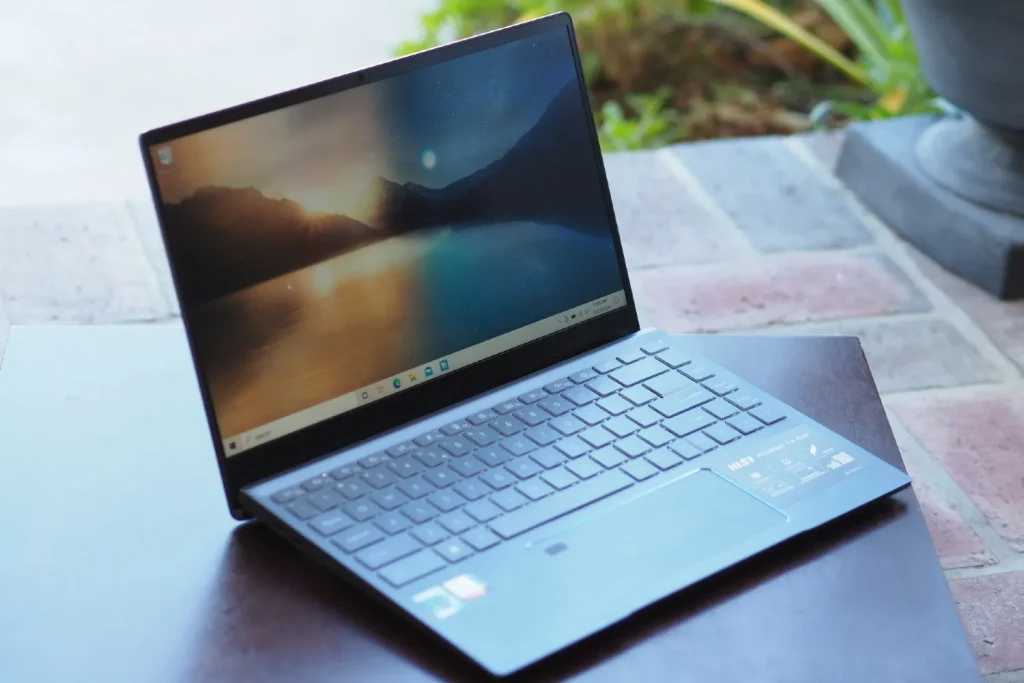
The MSI Prestige 14 EVO is designed with professionals in mind. Sporting the latest Intel Core Ultra processors, Intel Arc integrated graphics, and up to 32GB of LPDDR5 RAM, this laptop balances raw power with portability. It’s incredibly thin and light, weighing just around 2.8 pounds, making it a perfect companion for business travelers, freelancers, and remote workers.
Its 14-inch QHD+ display offers sharp visuals, excellent brightness, and strong color reproduction—ideal for presentations, content editing, or streaming your favorite shows. Combine that with Wi-Fi 7, multiple Thunderbolt 4 ports, and long-lasting battery life, and you’ve got a professional powerhouse built for 2025’s work environment.
This laptop also stands out for its AI-enhanced performance modes, which adjust system resources depending on whether you’re working, streaming, or multitasking. That means smoother performance without draining the battery unnecessarily.
Performance for Professionals
If your day involves juggling spreadsheets, designing in Adobe Creative Cloud, or running demanding software like MATLAB or AutoCAD, the Prestige 14 EVO won’t disappoint. Its AI-driven optimization means programs launch faster, multitasking feels smoother, and video calls are more stable thanks to built-in noise-canceling microphones and AI-enhanced webcams.
Compared to many business laptops, the Prestige 14 EVO delivers premium performance without looking like a bulky workstation. It handles light to moderate gaming, too, although it’s not marketed as a gaming device.
For professionals who spend most of their time in a digital workspace, this laptop provides the sweet spot between performance, portability, and long battery life.
Portability & Battery Efficiency
MSI engineered the Prestige 14 EVO to be a road warrior’s dream machine. At under 3 pounds, it slips easily into backpacks, making it ideal for frequent flyers and digital nomads. Its battery lasts around 12–14 hours under typical workloads, and the fast-charging USB-C power adapter ensures you can top it up in less than an hour.
One underrated feature is its efficient cooling system. Despite being so slim, MSI’s cooling design prevents overheating, meaning you can use it comfortably on your lap without it turning into a hotplate.
In 2025, where mobility is key, the Prestige 14 EVO hits all the right notes for users who want a reliable device that doesn’t weigh them down.
Pros and Cons of the MSI Prestige 14 EVO
Pros:
- Lightweight and ultraportable design
- Powerful Intel Core Ultra performance
- Long battery life with fast charging
- Premium build quality
- Excellent QHD+ display
Cons:
- Not ideal for heavy gaming
- Limited upgrade options (RAM is soldered)
- Smaller speakers compared to larger laptops
Asus ZenBook Pro 14 OLED
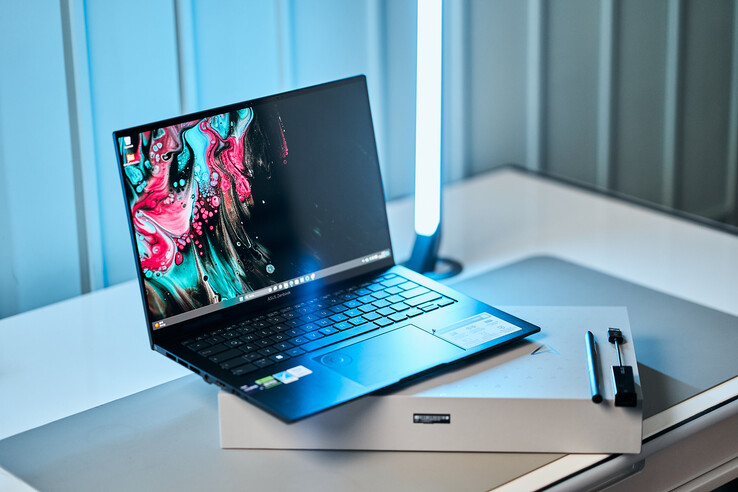
The Asus ZenBook Pro 14 OLED is a laptop that feels like it was made for creatives who live and breathe visuals. The first thing you notice is its breathtaking 14-inch 2.8K OLED HDR display. It boasts 100% DCI-P3 color coverage, ultra-deep blacks, and a peak brightness that makes HDR content truly shine. Whether you’re a photographer editing RAW files, a video editor working in 4K, or simply a movie lover, this screen transforms your experience into something cinematic.
But it’s not just about beauty—it’s also about precision. Unlike standard IPS displays, OLED panels on the ZenBook Pro 14 deliver pinpoint color accuracy and high contrast, making it perfect for anyone who needs a display they can trust. With a 120Hz refresh rate, it’s also buttery smooth for day-to-day use, scrolling, or even light gaming. This combination of sharpness, speed, and accuracy sets it apart from the competition in 2025.
Power and Productivity in One Package
Under the hood, the ZenBook Pro 14 OLED is no slouch. It comes powered with the latest Intel Core Ultra H-series processors or AMD Ryzen 8000 options, paired with up to 32GB of RAM and NVIDIA RTX 4050/4060 discrete graphics. This makes it a true hybrid between a professional workstation and a personal entertainment hub. You can edit videos, run simulations, or even dive into AAA games without breaking a sweat.
Thanks to Asus’ IceCool Pro thermal system, the ZenBook maintains performance even under heavy loads. Heat has always been a bottleneck in thin laptops, but Asus engineers managed to design efficient cooling without turning the fan noise into a distraction.
On top of raw power, the ZenBook includes Asus’ ScreenPad Plus in some models—a secondary touchscreen above the keyboard that expands your productivity options. This is a feature creatives adore, as it enables multitasking like having a second monitor in a compact form factor.
Creative User Advantages
The ZenBook Pro 14 OLED is clearly aimed at creators and professionals. Graphic designers, video editors, and photographers will love the ability to work with colors they can trust. The combination of NVIDIA Studio drivers and AI-enhanced creative tools makes rendering faster and smoother. If you’re in the creative industry, this laptop provides a near-desktop-level experience in a portable package.
It also appeals to multitaskers. Imagine editing a video timeline on the main OLED screen while using the secondary ScreenPad Plus for color grading tools or project notes. It’s a workflow game-changer. Beyond that, Asus includes thoughtful touches like harmon/kardon-tuned audio for crisp sound, ergonomic tilting keyboards for comfort, and robust connectivity options including Thunderbolt 4, HDMI 2.1, and microSD readers.
Pros and Cons of the Asus ZenBook Pro 14 OLED
Pros:
- Brilliant OLED HDR display with 120Hz refresh rate
- Excellent for creatives and professionals
- Dedicated NVIDIA RTX graphics
- Secondary ScreenPad Plus boosts productivity
- Premium build and design
Cons:
- Battery life shorter under heavy creative workloads
- Higher price tag compared to standard ultrabooks
- Heavier than some ultraportables due to added features
Asus Chromebook Plus CX34
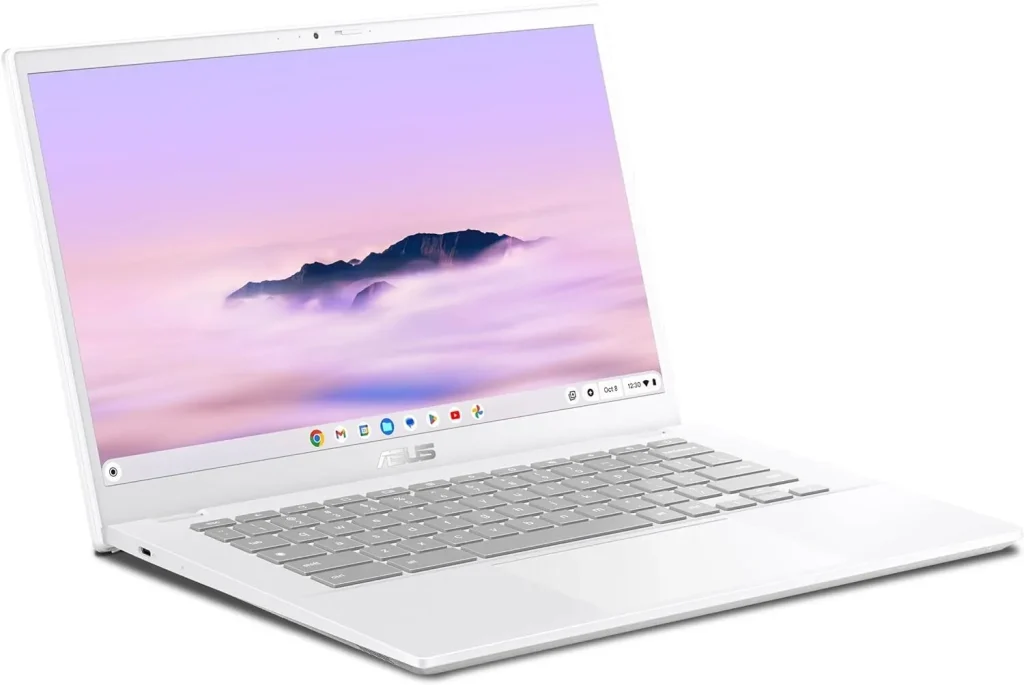
Not everyone needs a powerhouse, and that’s where the Asus Chromebook Plus CX34 shines. Designed to be affordable yet capable, this laptop is perfect for students, remote workers, and casual users. Powered by Intel’s latest processors with up to 16GB RAM, the Chromebook Plus CX34 feels snappy and responsive for day-to-day tasks like browsing, streaming, and writing documents.
Unlike older Chromebooks that felt limited, the Plus series delivers a smooth and polished experience, with faster boot times, improved multitasking, and extended app support. You get full access to the Google Play Store alongside progressive web apps, making this a surprisingly versatile machine despite its lightweight design.
ChromeOS Benefits & Cloud Integration
One of the biggest selling points of the Chromebook Plus CX34 is its deep integration with Google’s ecosystem. If you live inside Gmail, Google Drive, Docs, and Meet, this laptop is basically a match made in heaven. The seamless sync between devices means your files are always accessible, whether you’re on your phone, tablet, or laptop.
Security is another advantage. ChromeOS laptops are known for automatic updates, virus protection, and minimal maintenance, making them perfect for those who don’t want to worry about tech headaches. Plus, in 2025, Google has added AI-powered features like smart writing assistants, background noise cancellation in calls, and automatic file organization, making Chromebooks even more user-friendly.
Perfect for Students & Remote Work
Students will find the Chromebook Plus CX34 incredibly reliable for schoolwork. Its lightweight design makes it easy to carry around campus, and the battery can last up to 12–15 hours on a single charge—enough for a full day of classes and study sessions.
Remote workers also benefit from its simplicity. Video calls are smoother thanks to AI-enhanced cameras and microphones, and with the growing adoption of web-based platforms like Zoom, Slack, and Notion, the Chromebook is no longer a compromise—it’s a smart choice.
Of course, this laptop isn’t built for video editing or hardcore gaming, but for everyday productivity at a budget-friendly price, it’s hard to beat.
Pros and Cons of the Asus Chromebook Plus CX34
Pros:
- Affordable price point
- Lightweight and portable design
- Excellent battery life
- Seamless Google ecosystem integration
- AI-powered features for productivity
Cons:
- Limited performance for demanding software
- Not suitable for gaming or creative-heavy workloads
- Storage is smaller compared to Windows laptops
Razer Blade 14
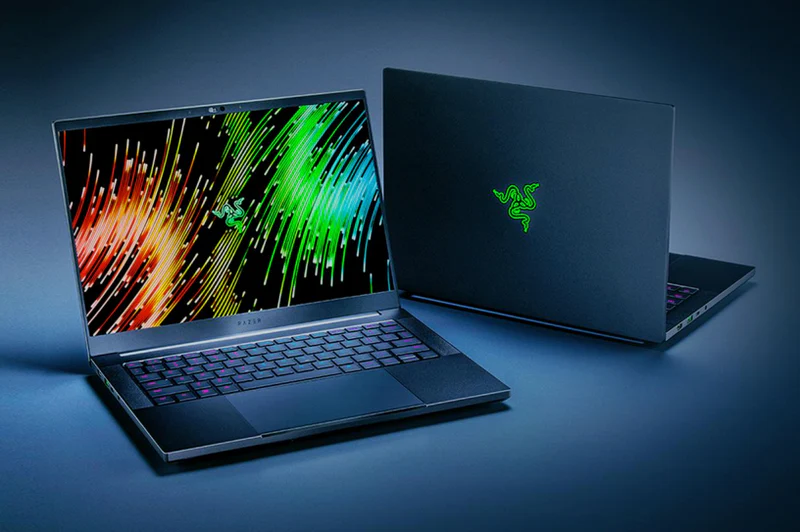
The Razer Blade 14 continues to be the gold standard for gaming laptops in 2025. Known for its sleek, minimalist design that looks as professional as it does gamer-focused, the Blade 14 bridges the gap between work and play. With AMD Ryzen 9 processors and NVIDIA RTX 4070/4080 GPUs, this machine is built to chew through the latest AAA games while doubling as a workstation for video editing, 3D modeling, or coding.
Despite its raw power, the Razer Blade 14 keeps things compact. At just 14 inches and weighing around 4 pounds, it’s far more portable than most gaming rigs. It’s the perfect balance of performance and portability, ideal for gamers who also want a laptop that doesn’t scream “gaming” during a business meeting.
Graphics Performance and Gaming Capabilities
Gaming is where the Blade 14 truly shines. Equipped with high-refresh-rate QHD displays (165Hz–240Hz), gameplay feels incredibly smooth and immersive. Combined with NVIDIA’s DLSS 3 and ray tracing, games look cinematic while still maintaining high frame rates.
For esports players, the low latency and ultra-fast refresh rates are a dream, while casual gamers can appreciate the laptop’s ability to handle everything from indie titles to blockbuster releases. In 2025, with games becoming more graphically demanding, the Blade 14 is one of the few laptops that can confidently handle them all.
Design, Cooling, and Battery Life
Unlike many bulky gaming laptops, the Blade 14 keeps its premium aluminum unibody design slim and elegant. It looks just as at home in an office as it does in a gaming setup. Razer has improved its cooling system significantly, ensuring performance remains stable without overheating or loud fan noise.
Battery life has also improved compared to older models. While heavy gaming still drains it quickly, general productivity can last 7–9 hours, which is impressive for a laptop of this caliber. Fast charging via USB-C makes it easier to stay powered on the go.
Pros and Cons of the Razer Blade 14
Pros:
- Outstanding gaming and graphics performance
- Premium, sleek design suitable for work and play
- High-refresh-rate QHD display
- Portable compared to other gaming laptops
- Strong cooling system
Cons:
- Expensive price tag
- Battery drains quickly when gaming
- Limited upgrade options
Microsoft Surface Laptop
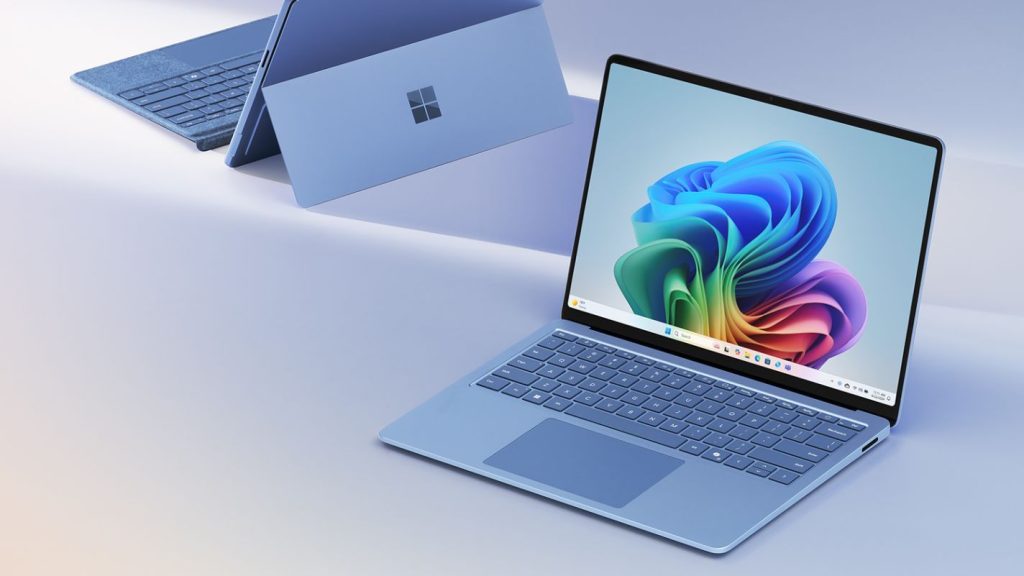
The Microsoft Surface Laptop has become a household name in productivity, and the 2025 model is no exception. Sleek, stylish, and reliable, it represents the best of Windows in a premium form factor. Available in 13.5-inch and 15-inch versions, the Surface Laptop is powered by Intel Core Ultra or Microsoft’s custom SQ processors, optimized for AI-powered Windows 11 features.
The design remains timeless—thin, light, and available in multiple colors. The keyboard is one of the most comfortable on the market, and the PixelSense touchscreen display is sharp, bright, and supports pen input, making it great for note-taking or creative sketching.
Windows Integration & Productivity Features
Where the Surface Laptop really shines is in its deep integration with Windows 11. From seamless Microsoft 365 performance to AI-powered Copilot features, it’s designed to make productivity effortless. Features like instant wake, adaptive brightness, and Windows Hello facial recognition make it both secure and convenient.
With up to 32GB RAM and 1TB SSD storage, it handles heavy multitasking with ease. Video conferencing is also a joy thanks to the AI-enhanced webcam, studio-quality microphones, and Dolby Atmos speakers.
For those embedded in Microsoft’s ecosystem—Teams, OneDrive, and Office Suite—the Surface Laptop feels like the most natural and seamless choice.
Who Should Buy the Surface Laptop?
The Surface Laptop is perfect for students, professionals, and creatives who value balance. It’s not a hardcore gaming laptop, nor a workstation replacement, but it provides an excellent mix of performance, portability, and usability. If you’re looking for a reliable laptop that “just works” and integrates beautifully with Microsoft’s ecosystem, this is the one.
Business professionals will love its sleek design, students will love its portability, and everyday users will love how easy it is to use.
Pros and Cons of the Microsoft Surface Laptop
Pros:
- Premium design with touchscreen display
- Seamless Windows 11 and Microsoft ecosystem integration
- Excellent keyboard and trackpad
- Lightweight and portable
- Strong AI features and productivity tools
Cons:
- Not ideal for gaming or very demanding workloads
- Limited port selection
- Higher price compared to some Windows laptops
Comparing the Top 5 Laptops of 2025
Performance Comparison
When it comes to performance, each laptop on this list shines in its own way. The MSI Prestige 14 EVO is a clear winner for professionals who need consistent speed in a portable form. Its AI-optimized performance and Intel Core Ultra processors make multitasking a breeze. Meanwhile, the Asus ZenBook Pro 14 OLED steps up with NVIDIA RTX graphics, making it ideal for heavy creative workloads like video editing, animation, or CAD design.
If raw gaming power is what you’re after, the Razer Blade 14 dominates with RTX 4070/4080 options and high-refresh-rate displays. On the flip side, the Microsoft Surface Laptop offers a well-balanced experience that focuses on seamless productivity rather than raw horsepower. Finally, the Asus Chromebook Plus CX34 may not compete in sheer power, but it’s unbeatable for lightweight computing tasks, cloud-first workflows, and budget-conscious buyers.
In short:
- Best for gaming: Razer Blade 14
- Best for creativity: Asus ZenBook Pro 14 OLED
- Best for professional work: MSI Prestige 14 EVO
- Best for students/budget users: Asus Chromebook Plus CX34
- Best all-round productivity: Microsoft Surface Laptop
Display and Design Comparison
Displays are a defining feature in 2025, and here’s where some laptops really stand out. The ZenBook Pro 14 OLED takes the crown with its vibrant OLED HDR panel, offering unmatched color accuracy and visual clarity. Gamers, however, will love the Razer Blade 14’s QHD high-refresh screen, designed for buttery-smooth motion.
For professionals who prioritize portability, the MSI Prestige 14 EVO delivers a bright QHD+ display in a compact chassis, while the Microsoft Surface Laptop balances clarity with touchscreen capability, giving it a unique edge for note-takers and creatives. Meanwhile, the Asus Chromebook Plus CX34 offers a simple but reliable display that’s more than sufficient for everyday tasks.
In terms of design, the Razer Blade 14 and MSI Prestige 14 EVO are sleek and premium, while the Surface Laptop provides elegance with multiple color options. The ZenBook Pro 14 OLED is bulkier due to its secondary screen and powerful hardware, while the Chromebook CX34 is minimalist and lightweight for students and travelers.
Price-to-Value Analysis
Price is always a deciding factor, and each laptop offers different value propositions. The Asus Chromebook Plus CX34 is the most affordable, making it perfect for budget-conscious buyers who don’t need high-end specs. The MSI Prestige 14 EVO sits in the mid-range, offering great value for professionals who want premium performance without going all-in on a gaming or creative rig.
The Microsoft Surface Laptop leans toward premium pricing, but its seamless Windows experience and productivity-focused features make it worth it for professionals. The Asus ZenBook Pro 14 OLED comes at a higher cost due to its OLED display and dedicated graphics—an investment that creatives will find justified. At the top end, the Razer Blade 14 is expensive but delivers unmatched gaming performance and professional-level power in one device.
If we rank by value:
- Budget-friendly: Asus Chromebook Plus CX34
- Best balance of price and performance: MSI Prestige 14 EVO
- Premium productivity pick: Microsoft Surface Laptop
- Creative powerhouse worth the price: Asus ZenBook Pro 14 OLED
- Gaming splurge: Razer Blade 14
Which Laptop is Right for You?
Best for Professionals
If your day revolves around spreadsheets, video conferences, or design tools, the MSI Prestige 14 EVO is your go-to. It balances power, portability, and battery life, making it ideal for corporate workers, freelancers, and digital nomads.
Best for Students
Students should look no further than the Asus Chromebook Plus CX34. It’s budget-friendly, lightweight, and offers excellent integration with Google Workspace. Plus, its long battery life makes it a reliable study partner.
Best for Gamers
For gamers, nothing beats the Razer Blade 14. It has the muscle to run the latest AAA titles at high settings and also doubles as a serious productivity machine for streamers, developers, or creative users.
Best for Creatives
Creatives will fall in love with the Asus ZenBook Pro 14 OLED. Its OLED screen, RTX graphics, and multitasking-friendly ScreenPad Plus make it a portable studio.
Best All-Rounder
If you just want a laptop that does everything well, the Microsoft Surface Laptop is the all-rounder. It blends style, power, and productivity features without leaning too hard in one direction.
Conclusion
The laptop market in 2025 is rich with options, each catering to different needs and lifestyles. Whether you’re a professional looking for a reliable daily driver, a gamer seeking high-performance graphics, a student who wants affordability, or a creative who demands the best display possible, there’s a laptop on this list designed for you.
The MSI Prestige 14 EVO is the ultimate work companion, the Asus ZenBook Pro 14 OLED is a dream for creatives, the Asus Chromebook Plus CX34 offers unbeatable value for students, the Razer Blade 14 is the gaming king, and the Microsoft Surface Laptop remains the elegant all-rounder.
Choosing the right one depends on your priorities—performance, portability, budget, or display quality. But rest assured, these five laptops represent the best of 2025, and whichever you pick, you’ll be investing in a machine designed to keep up with today’s demands and tomorrow’s innovations.
FAQs
1. Which laptop is best for video editing in 2025?
The Asus ZenBook Pro 14 OLED is the best choice for video editing due to its OLED HDR display, NVIDIA RTX graphics, and creative workflow tools.
2. Are OLED displays worth it for laptops?
Yes, OLED displays provide superior color accuracy, contrast, and HDR support—making them a must-have for creatives and anyone who values stunning visuals.
3. Is the Razer Blade 14 only for gaming?
No, while it’s a gaming powerhouse, the Razer Blade 14 is also excellent for professionals who need strong performance for creative and technical workloads.
4. How long should a 2025 laptop last?
With proper care, a premium laptop bought in 2025 should last 5–7 years. Budget models may last closer to 3–5 years depending on usage.
5. What’s the most budget-friendly option from this list?
The Asus Chromebook Plus CX34 is the most budget-friendly, offering excellent performance for students and casual users at an affordable price.


Leave a Reply